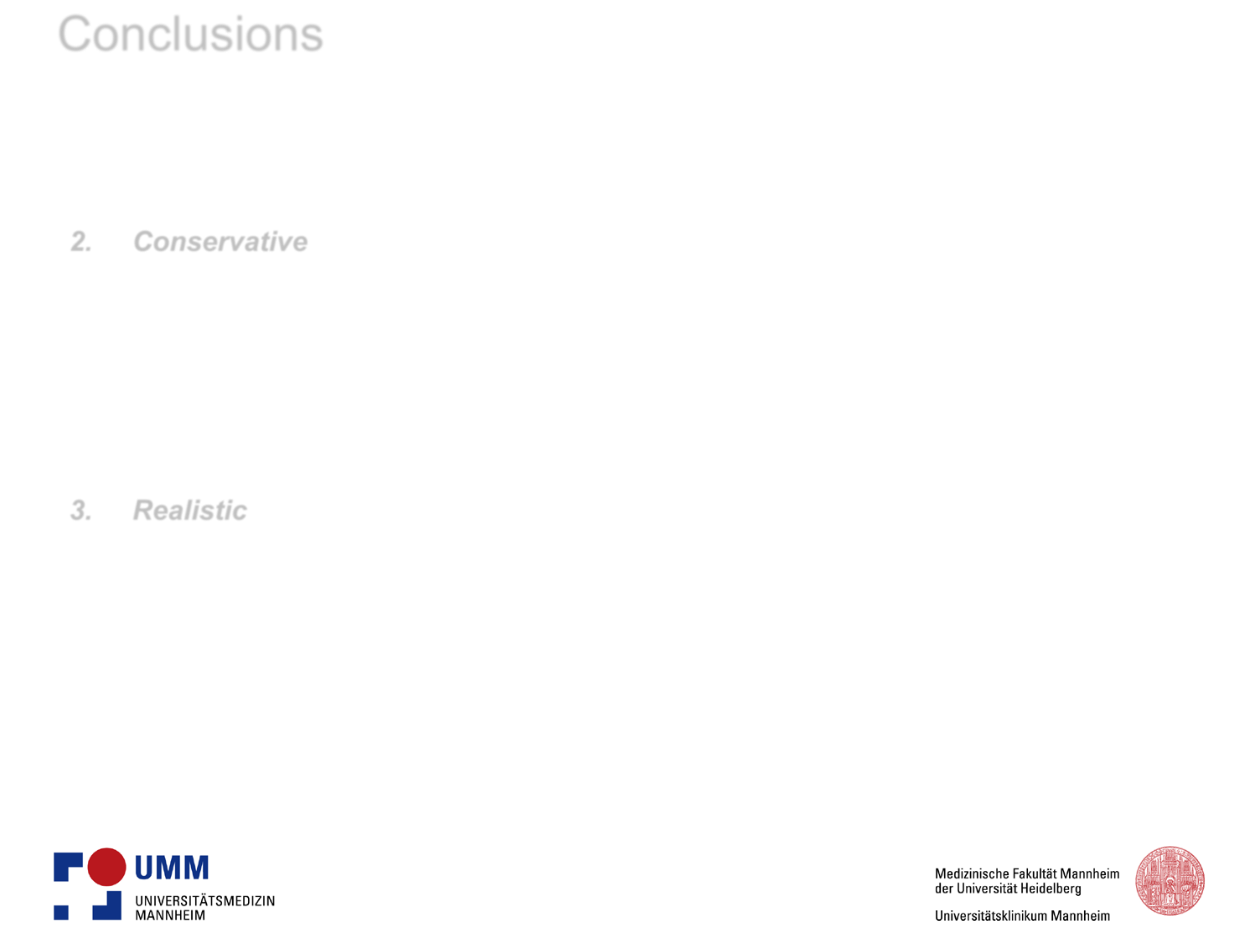

ESTRO IMRT Course, May 2013
1.
Conventional RT probably goes with a secondary tumor risk of approximately 1%
(High- and Low-dose Areas together). The dose/volume effects for secondary tumor
risk are currently completely unclear.
2.
Conservative
estimates suggest an increase by IMRT to 2%, e.g. the secondary
tumor risk doubles when compared to conventional RT.
But:
- It is still an overall low number.
- For most diseases, this is negligible in comparison to the risk of local recurrence.
- Given the predominantly old age of patients, this is mostly irrelevant anyway
- New planning systems create efficient plans, so that the number of monitor units
decreases dramatically
3.
Realistic
estimates suggest a factor of <1.5 between the secondary tumor risk of
conventional RT and IMRT.
4.
It is not completely improbable, that IMRT
reduces
the risk of secondary tumors
5.
Precise knowledge of the dose at SMN origin is necessary to further refine our
knowledge (prospective evaluation necessary!!!!)
6.
IMRT for children and breast cancer has to be used with caution, weighing benefits
against potential risk, but the same holds true for IORT












